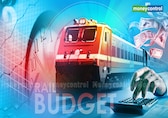- 3,280
- 1,237
- Axis Group

Date of Event:
Jan 7, 2025
Got it! I'll keep track of Indian Railways' developments and news here. Let me know if you'd like to dive into any specific project or update.
Follow along with the video below to see how to install our site as a web app on your home screen.

Note: this_feature_currently_requires_accessing_site_using_safari
 South Asia
South Asia










 ANI Video
ANI Video











What Is A Tilting Train And Why India's Getting 100 Of Them
Tilting trains are operational in 11 countries and an Indian Railways official said that Vande Bharat trains will also have this technology soon.
Read Time:3 mins
- Edited by:Amit Chaturvedi
- India News
- Nov 25, 2022 19:18 pm IST
- Published OnNov 25, 2022 19:16 pm IST
- Last Updated OnNov 25, 2022 19:18 pm IST
Share

Vande Bharat trains to be manufactured by 2025 will have this technology.
India will get its first tilting train in the next two-three years, according to a senior official of Indian Railways. The technology enables trains to maneuver curves at increased speed, that too on regular tracks, just like a motorcycle on a winding road. Vande Bharat trains, manufactured in India, will be equipped with the technology by 2025 that will improve their speed. Such trains are now operational in 11 countries - Italy, Portugal, Slovenia, Finland, Russia, the Czech Republic, the UK, Switzerland, China, Germany and Romania.
"We will have tilting trains in the country. We will tie up with a technology partner for this. We will have this technology in 100 Vande Bharat trains over the next two to three years," news agency PTI quoted the Railways official as saying on Friday.
The Indian Railways has explored various options in the past regarding tilting trains, but has never finalised any detail. It also had discussions with Spanish manufacturer Talgo as well as the Switzerland government, PTI added.
How does a tilting train work?
When a train rounds a curve at speed, objects (and people) inside experience centrifugal force, which pushes them outwards.
The effect can cause luggage inside to slide, seated passengers to feel squashed and standing passengers to lose balance. These trains are designed to counteract the effect by tilting the carriages towards the inside of the curve, thus compensating the g-force.
According to Sweden-based KTH Engineering Sciences, there can be various mechanisms to neutralise the tilt force and achieve a balance. It further explains how motion sickness can be essentially eliminated by adjusting the timing of when the cars tilt.

What Is A Tilting Train And Why India's Getting 100 Of Them
Tilting trains are operational in 11 countries and an Indian Railways official said that Vande Bharat trains will also be equipped with this technology soon.www.ndtv.com


Haven't been on a desi train for years and years now
want to try one of these new ones
there's some charm etc to it all but trains are generally not nice here, even AC 1st.
they take too long too, 20+ hours vs 2 hours something
not worth, unless you doing it just for the sake of it
have much fond memories of the Rajdhani Express but, good times


I've seen some, those vistadome coaches with the seat flip thing is amazing. Some of that scenery is insane, no roads for god knows how many 10s or 100s ? of miles... aircraft fly too high, too fast to seeBande Bharat Express is reportedly very nice. I posted some Bangladesh woman's VLOG about it.

 The Economic Times
The Economic Times











Dilli se Srinagar ka safar 13 ghante me mukammal kare gi !
looks allrite
@Vsdoc @Guru Dutt @Paitoo @Krishna with Flute .. do all of these come with vistadome coaches ?



I had no idea, thought only the vande ones have those coaches,Good infrastructure projects in J & K. We could have never imagined these under previous governments. They were too content to let the status quo prevail.
A train has only one or 2 vistadome coaches. And it need not be a Vande Bharat train. Normal trains also have them. I travelled in one, but couldn't get ticket for the vistadome













Are there any working hyperloops anywhere in the world or is it still experimental tech ?


Mai toh na baithu... accident type ho gya uss speed pe, gae kaam se bcOnly Experimental.

Only Experimental.

 dot.la
dot.la

 dot.la
dot.la

Well the Indian one is not operating commercially either, is it?
The hyperbole of the hyperloop movement is now seen as mostly wasted money.
This is "feel-good" garbage that some govts. waste money on, placating their citizens that they are "ahead of the times". When much more practical projects should have taken priority.
The only gainer from these projects in 3rd world countries is the leadership who pockets "percentages" from the nautanki foisted. We've seen this in Bangladesh for over fifty years.
Around 2022 - both Sir Branson of Virgin and Elon Musk were setting up in downtown LA, then things really petered out, Musk split town and moved his project to Pflugerville (near Austin, TX). Branson changed the passenger focus to concentrate more on moving cargo.

The Boring Company Is the Latest To Join Elon Musk’s Golden State Exodus
The underground tunnel infrastructure startup has officially relocated its headquarters from L.A. to the Austin, Texas suburb of Pflugerville.dot.la

Virgin Hyperloop Lays Off Half Its Staff As It Pivots From Passenger to Cargo Trains
The L.A.-based high-speed vacuum train project is shifting its focus to freight, citing regulatory and supply chain issues.dot.la
Loading...